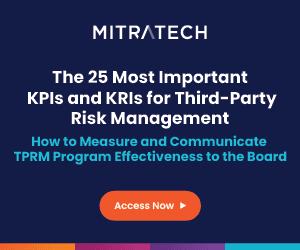Discretionary denials of inter partes and post-grant review petitions have climbed substantially after a memo issued early this year by the acting director of the US Patent and Trademark Office. Jessica Kaiser, Chris Marando and Jon Carter of Perkins Coie explore the fallout of these changes and what they signal for how the office will handle decisions.
In March, US Patent and Trademark Office (USPTO) Acting Director Coke Morgan Stewart issued a memorandum that significantly altered the way the Patent Trial and Appeal Board (PTAB) handles institution decisions.
In particular, the memo bifurcated the process such that the acting director first decides all discretionary denial issues and only thereafter do petitions not discretionarily denied proceed to an assessment of the technical merits by a panel of administrative patent judges (APJs).
For the discretionary denial stage, the memo confirmed the applicability of existing doctrines (e.g., Fintiv) while adding several new “relevant considerations,” including what the acting director referred to as “[s]ettled expectations of the parties, such as the length of time the claims have been in force.”
As of Aug. 13, the USPTO has discretionarily denied 60% of the 294 inter partes review (IPR) and post-grant review petitions considered under the new process, a substantial increase compared to the USPTO’s reported 31% total institution denial rate in fiscal year 2025 through Feb. 28 (i.e., in APJ panel institution decisions addressing merits and discretionary issues).
Focusing specifically on “settled expectations,” the first denial issued June 6 in iRhythm Techs., Inc. v. Welch Allyn, Inc. In those IPRs, multiple considerations weighed against discretionary denial (e.g., a district court trial date after the projected final written decision date, little investment by the parties in the co-pending proceeding and a high likelihood of a stay following IPR institution), yet the acting director still denied the petitions because one of the challenged patents had “been in force since as early as 2012” and the petitioner had been aware of it since at least 2013 (having cited the then-pending application in an information disclosure statement during prosecution of the petitioner’s own patent application). The acting director found that the petitioner’s awareness “and failure to seek early review of the patents favors denial and outweighs the above-discussed considerations.”
The acting director has since clarified that although there is “no bright-line rule,” “in general, the longer the patent has been in force, the more settled expectations should be.” (See Dabico Airport Solutions Inc. v. AXA Power ApS). In practice — and based on a comprehensive review of the discretionary denial decisions that have issued since iRhythm as of Aug. 13 — when a challenged patent has been in force for six or more years at the time of the discretionary denial decision, there is effectively a presumption of “settled expectations” that weighs heavily in favor of denial.
Are We About to Experience AI-Created Bionic Patent Trolls?
Generative AI is already helping companies think of new ideas
Read moreDetailsIndeed, during this period, 81% of the 134 petitions challenging patents six or more years old have been discretionarily denied compared to 42% of the 149 petitions challenging patents less than six years old. And notably, the acting director has found that “settled expectations” do not support denial if a patent has been in force for just under six years. (See, e.g., Berkshire Hathaway Energy Co. v. Birchtech Corp.)
Patent age has thus become an important consideration when crafting a PTAB strategy, and petitioners must be prepared to address it, even if the patent owner fails to do so. Dabico notes it is petitioner’s responsibility “not only to respond to patent owner’s arguments but also to identify reasons not to exercise discretion to deny institution” (emphasis in original).
According to the USPTO’s “Interim Director Discretionary Process” guidance, “While the Director ordinarily will rely on facts and circumstances that the parties raise in their briefs, the Director will consider additional facts and circumstances where appropriate, for example: … To maintain consistency with Discretionary Decisions that the Director has already issued … Where there are facts and circumstances within the purview of the Office or Office operations that the parties are not in a position to raise … Where there are facts and circumstances in the record or in the public domain that are relevant to the determination.”
For example, the acting director has suggested that a petitioner might overcome “settled expectations” by pointing out “a significant change in law” or that a challenged patent “may have been in force for years” but was never “commercialized, asserted, marked, licensed, or applied in a petitioner’s particular technology space, if at all.” (Cf. Intel Corp. v. Proxense LLC). Shenzen Tuozhu Tech. Co., Ltd. v. Stratasys, Inc. declares, “The patent challenged…has been in force for approximately 10 years, creating strong settled expectations for Patent Owner. Petitioner, however, presents evidence that the challenged patents have never been ‘commercialized, asserted, marked, licensed, or otherwise applied’ in Petitioner’s ‘particular technology space.’ This evidence weighs against Patent Owner’s claim of strong settled expectations.”
In addition, some petitioners have succeeded in countering “settled expectations” using three different approaches: (1) pointing to a co-pending, complex litigation that involves not only the challenged patent but multiple patents across multiple families; (2) filing parallel IPR petitions that additionally challenge related patents (e.g., continuations or continuations-in-part) that are less than six years old and are susceptible to the same or similar invalidity grounds; and/or (3) pointing out substantive errors that the USPTO made during prosecution. From Tesla, Inc. v. Intellectual Ventures II LLC.: “Petitioner’s arguments regarding the complex and diverse litigation proceeding tip the balance against discretionary denial. Petitioner explains that the district court proceeding involves eleven patents spanning nine different families that involve a diverse range of subject matter. The large number and vast scope of the patents asserted in the district court litigation weighs against discretionary denial, as the Board is better suited to review a large number of patents involving diverse subject matter.”
These recent examples provide useful guidance that practitioners should consider when devising a PTAB strategy against older patents, particularly where those patents are part of a larger dispute between the parties, those patents have more recent family members or the petitioner can show a clear, material error by the examiner during original prosecution.




 Jessica Kaiser
Jessica Kaiser Chris Marando
Chris Marando Jon Carter
Jon Carter








